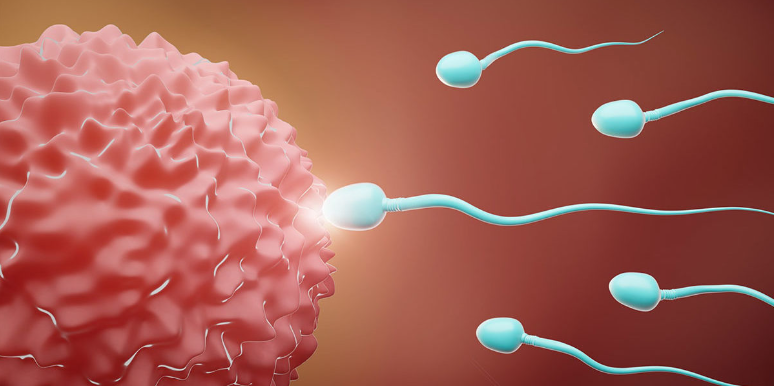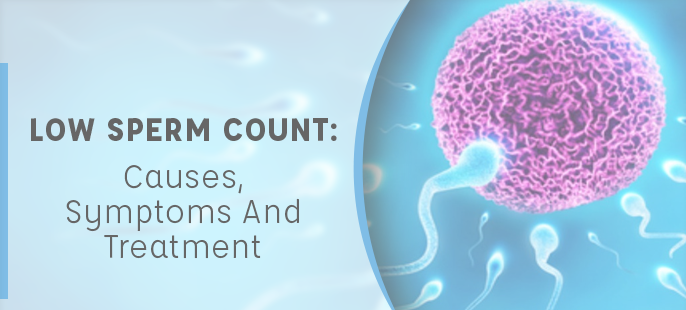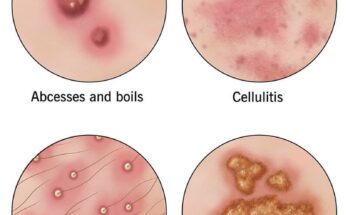Low sperm count, a condition that affects millions of men worldwide, can impact fertility and overall health. For many, a low sperm count can bring frustration and stress, especially for couples trying to conceive. The good news is that advancements in medical science, particularly in stem cell therapy, offer new hope and effective solutions.
What is Low Sperm Count?

Low sperm count, also known as oligospermia, is a condition where a man’s semen contains fewer sperm cells than average. The World Health Organization (WHO) classifies a healthy sperm count as having at least 15 million sperm per milliliter of semen. A count lower than this is considered low and can significantly reduce the chances of fertilizing an egg.
Low sperm count isn’t the only factor that affects male fertility, but it’s a critical one. Quality sperm must be not only plentiful but also motile (able to move effectively) and well-shaped to successfully fertilize an egg. Low sperm count affects one or more of these aspects, making conception more challenging.
Causes of Low Sperm Count
A variety of factors contribute to low sperm count. While some are genetic or medical, lifestyle and environmental factors can also play a significant role. Some common causes include:
- Hormonal Imbalances: Testosterone and other hormones play an essential role in sperm production. Low levels or imbalances can reduce sperm count.
- Varicocele: This is a condition where veins within the scrotum become enlarged, affecting testicular function and sperm production.
- Infections: Certain infections, including sexually transmitted infections (STIs) and urinary tract infections, can impact sperm health.
- Lifestyle Factors: Poor lifestyle choices, such as smoking, excessive alcohol consumption, lack of exercise, obesity, and stress, can reduce sperm count.
- Environmental Exposures: Exposure to certain chemicals, heavy metals, or radiation may negatively affect sperm count and quality.
- Medical Conditions and Treatments: Certain medications, surgeries, and treatments, including chemotherapy for cancer, can reduce sperm production.
Traditional Treatments for Low Sperm Count
Traditionally, treatments for low sperm count have included lifestyle changes, medications, hormone therapy, and surgical interventions for conditions like varicocele. While these treatments have proven effective in some cases, they do not work for everyone, especially in severe cases where low sperm count is due to underlying genetic or cellular issues.
However, a new solution is emerging in the form of stem cell therapy—a promising frontier in regenerative medicine with applications in various medical fields, including fertility treatments.
Stem Cell Therapy for Low Sperm Count
Stem cell therapy leverages the body’s natural regenerative abilities to repair damaged or dysfunctional tissues. Stem cells are unique in that they can develop into different types of cells, depending on the body’s needs. For conditions like low sperm count, stem cell therapy aims to restore fertility by promoting the production of new, healthy sperm cells.
How Stem Cell Therapy Works in Treating Low Sperm Count
- Stem Cell Harvesting: Stem cells, often sourced from the patient’s bone marrow or adipose (fat) tissue, are collected. These cells are versatile and can transform into different types of cells, including sperm-producing cells.
- Processing and Reintroduction: The harvested cells are processed in a laboratory and reintroduced into the patient’s reproductive system. In this environment, they can begin to function as spermatogenic cells—cells that produce sperm.
- Regeneration: Once in place, these cells aid in the regeneration of damaged testicular tissue and support the natural sperm production process, potentially increasing sperm count and improving motility.
A Stem Cell Solution for Low Sperm Count

One promising stem cell therapy product on the market today for low sperm count is Spidex 21. Developed with cutting-edge stem cell technology, Spidex 21 is designed specifically for men dealing with fertility challenges due to low sperm count.
What is Spidex 21?
Spidex 21 is a stem cell-based therapy product that aims to target the root causes of low sperm count by enhancing the body’s own sperm production capabilities. It is crafted to help regenerate spermatogenic cells and improve the overall quality and count of sperm in a safe, non-invasive manner.
Benefits of Using Spidex 21 for Low Sperm Count
- Natural Regeneration: Spidex 21 works with the body’s natural processes, encouraging the production of healthy sperm cells rather than relying solely on medications or surgery.
- Potentially Fewer Side Effects: As a cell-based therapy, Spidex 21 has been designed to minimize side effects. Traditional medications and hormonal treatments can sometimes lead to undesirable side effects, whereas stem cell therapy tends to work more harmoniously with the body.
- Improved Sperm Quality and Quantity: Clinical studies indicate that Spidex 21 can improve sperm count, motility, and morphology (shape), increasing the likelihood of successful fertilization.
- Non-Invasive and Personalized: Spidex 21 can be customized to suit individual needs, addressing the unique challenges each patient faces in fertility.
Who is a Good Candidate for Spidex 21?
While stem cell therapy, including Spidex 21, holds promise, it is not suitable for everyone. Candidates for Spidex 21 typically include men who:
- Have a diagnosed low sperm count (oligospermia) with no success from traditional treatments.
- Are dealing with age-related declines in sperm count.
- Have unexplained infertility that may stem from cellular dysfunction.
It is essential for potential candidates to consult with a qualified medical professional who specializes in reproductive health and stem cell therapies to determine if Spidex 21 is the right option.
Considering Stem Cell Therapy? Key Points to Remember
- Consult a Specialist: Not all fertility specialists are familiar with stem cell therapy for low sperm count. Seek advice from a qualified practitioner.
- Assess Your Options: While Spidex 21 is a promising option, discussing the range of available treatments can help ensure the best outcome.
- Stay Informed: Stem cell therapy is a rapidly advancing field. Make sure you’re up-to-date on the latest research and products.
Taking the Next Step Towards Healthier Fertility
For men facing the challenges of low sperm count, stem cell therapy represents a new frontier of hope. Spidex 21 is one of the few innovative treatments addressing the root causes of infertility on a cellular level, potentially revolutionizing the journey toward conception.
While every treatment journey is unique, products like Spidex 21 highlight the transformative potential of stem cell therapy in reproductive health. If you or someone you know is exploring solutions for low sperm count, speak with a fertility specialist to learn more about stem cell options and take a significant step toward achieving your fertility goals.
Conclusion
Low sperm count can be a challenging and emotional hurdle on the journey to starting a family, but breakthroughs in stem cell therapy offer promising new solutions. Spidex 21, a specialized stem cell product, represents a pioneering approach by targeting the root causes of low sperm count at a cellular level. Unlike traditional treatments, Spidex 21 works with the body to promote natural sperm regeneration, offering hope for those who haven’t found success with other methods.
If low sperm count is affecting your path to parenthood, considering innovative options like stem cell therapy could be a game-changer. Speak to a fertility specialist, explore whether Spidex 21 is right for you, and remember—you’re not alone. With the right knowledge and support, your fertility journey can move forward with optimism and renewed possibility.



